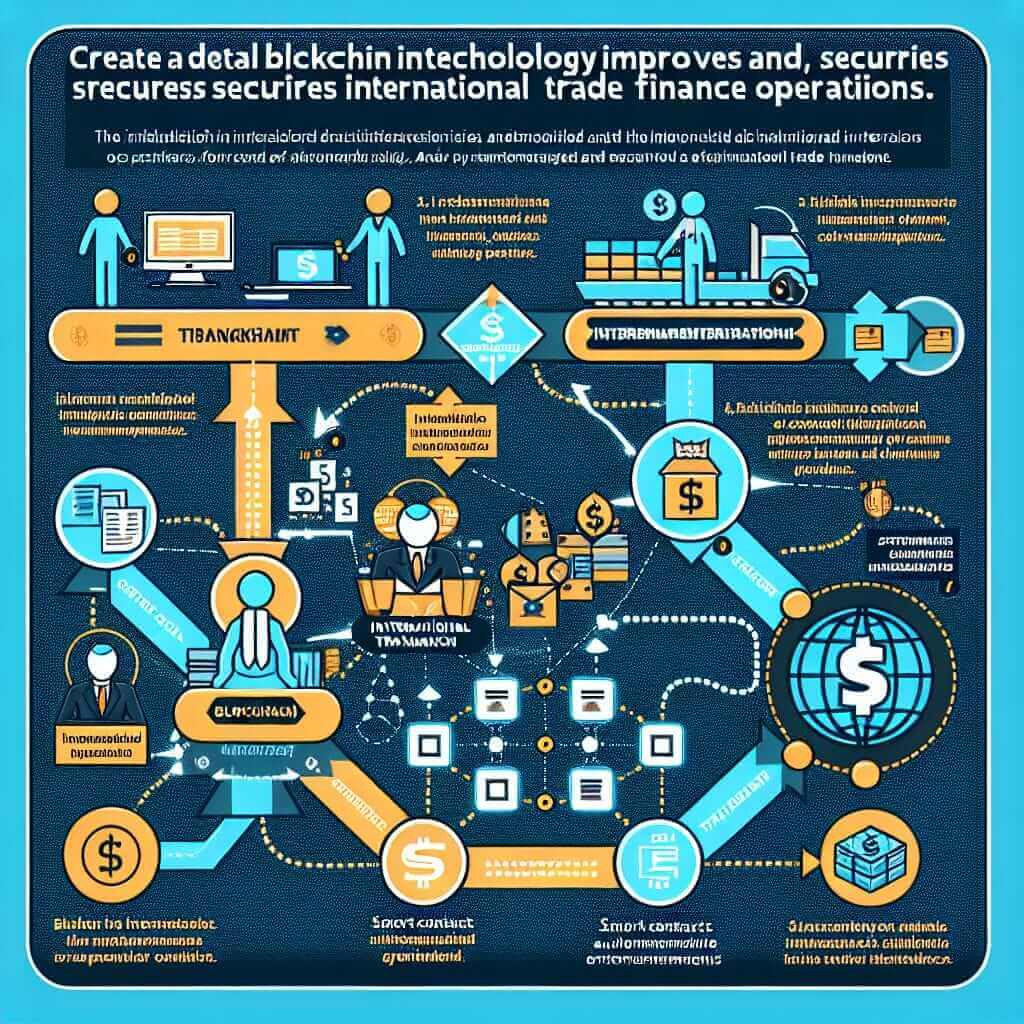The IELTS Reading section assesses your ability to comprehend and interpret texts of varying lengths and complexities. One topic that has gained significant traction recently is blockchain technology and its impact on global trade finance. Understanding the prevalence and relevance of such a topic can be beneficial for modern IELTS candidates, given its potential recurrence in future exams.
This article provides a comprehensive reading exercise for IELTS preparation focusing on “How is blockchain technology transforming global trade finance?” The exercise includes a sample reading text, a range of questions to test your understanding, detailed answer explanations, and insights into common mistakes. Additionally, we will highlight important vocabulary and complex grammar structures found within the sample text.
Sample Reading Passage: Blockchain Technology in Global Trade Finance
Medium Text
Blockchain technology, often associated with cryptocurrencies such as Bitcoin, is making substantial inroads into global trade finance. Trade finance involves a myriad of processes, from issuing letters of credit to ensuring payment security, and traditionally relies on paper-based documentation. Blockchain offers a revolutionary solution by digitalizing these documents and processes, thereby increasing efficiency, transparency, and security.
One of the significant benefits of blockchain in trade finance is the elimination of intermediaries. Traditional trade finance processes involve numerous intermediaries such as banks, brokers, and agents, each adding time and cost. Blockchain enables direct peer-to-peer transactions, significantly reducing the need for middlemen. Furthermore, blockchain’s immutable ledger ensures that all parties have access to a single, unalterable version of the truth, which minimizes the risk of fraud and errors.

Moreover, blockchain facilitates real-time tracking of goods and payments. Smart contracts, which are self-executing contracts with the terms of the agreement directly written into code, automatically trigger actions once predefined conditions are met. This not only accelerates transactions but also reduces the likelihood of disputes and delays.
Despite its promise, blockchain technology in trade finance faces several challenges. The adoption of blockchain requires significant changes to existing infrastructure and processes. Additionally, there are regulatory uncertainties and a need for widespread collaboration among international trade participants.
Nevertheless, numerous pilot projects and consortiums, such as the IBM-Maersk blockchain initiative, demonstrate the potential benefits of blockchain in making global trade more efficient, secure, and transparent. As these initiatives mature, it is likely that blockchain will become an integral component of global trade finance.
Questions
Multiple Choice
-
What is one of the primary advantages of blockchain technology in trade finance?
- A) Increased use of paper documentation
- B) Elimination of intermediaries
- C) Higher transaction costs
- D) Limited transparency
-
How do smart contracts benefit trade finance?
- A) By increasing the number of intermediaries
- B) By paper-based transactions
- C) By enabling real-time tracking and reducing disputes
- D) By complicating the transaction process
Identifying Information (True/False/Not Given)
-
Blockchain technology requires minimal changes to existing trade finance infrastructure.
- A) True
- B) False
- C) Not Given
-
The IBM-Maersk blockchain initiative is one of the failed projects in trade finance.
- A) True
- B) False
- C) Not Given
Matching Headings
-
Match the following headings to the paragraphs:
- i. Challenges in Implementing Blockchain in Trade Finance
- ii. Real-time Tracking and Efficiency
- iii. Elimination of Intermediaries
- iv. The Rise of Blockchain in Trade Finance
A) Paragraph 1 ____
B) Paragraph 2 ____
C) Paragraph 3 ____
D) Paragraph 4 ____
Answers and Explanations
-
B) Elimination of intermediaries
- The passage states that blockchain enables peer-to-peer transactions and reduces the need for middlemen.
-
C) By enabling real-time tracking and reducing disputes
- Smart contracts automatically trigger actions, accelerating transactions and reducing disputes.
-
False
- The passage notes that adopting blockchain requires significant changes to the existing infrastructure and processes.
-
False
- The passage highlights the IBM-Maersk initiative as a promising example of blockchain’s potential benefits.
-
A) iv, B) iii, C) ii, D) i
- Paragraph 1: The rise of blockchain in trade finance
- Paragraph 2: Elimination of intermediaries
- Paragraph 3: Real-time Tracking and Efficiency
- Paragraph 4: Challenges in Implementing Blockchain in Trade Finance
Common Mistakes
- Misinterpreting the primary advantages and challenges of blockchain technology.
- Confusing the order of headings and failing to link them accurately to corresponding paragraphs.
- Overlooking the need for substantial infrastructural changes required for blockchain implementation.
Vocabulary
- Inroads (noun): tiến bộ đáng kể /ˈɪn.roʊdz/
- Immutable (adjective): không thể thay đổi /ɪˈmjuː.tə.bəl/
- Ledger (noun): sổ cái /ˈledʒ.ər/
- Self-executing (adjective): tự thực hiện /self-ˌɛksɪˈkjuːtɪŋ/
- Predefined (adjective): được xác định trước /ˌpriː.dɪˈfaɪnd/
- Consortium (noun): tập đoàn /kənˈsɔːr.ti.əm/
Grammar
-
Relative Clauses: “Smart contracts, which are self-executing contracts with the terms of the agreement directly written into code, automatically trigger actions once predefined conditions are met.”
- Type: Non-defining.
- Example: The book, which is on the table, belongs to her.
-
Passive Voice: “The adoption of blockchain requires significant changes to existing infrastructure and processes.”
- Structure: subject + is/are + past participle.
- Example: The project is carried out by the team.
Advice for Achieving High Reading Scores
- Practice regularly with high-quality materials reflecting the IELTS format.
- Enhance vocabulary with a focus on academic and technical terms.
- Develop skimming and scanning techniques to locate information quickly.
- Understand question types, and practice identifying keywords and paraphrases in both the questions and the text.
- Review explanations for incorrect answers to understand mistakes and avoid repeating them.
By focusing on these areas, you can significantly improve your IELTS Reading score and be well-prepared for texts on modern topics such as blockchain technology’s impact on global trade finance.